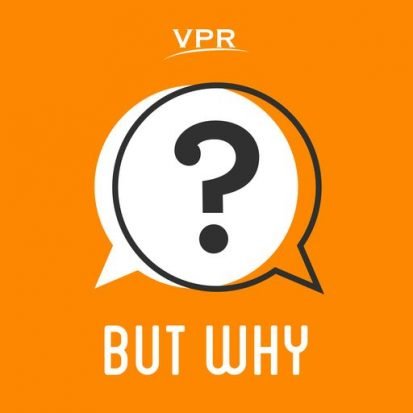
Why do seasons change?
Leave a reviewWhy do seasons change? Why does it get darker earlier in the winter and why is there more daylight in the summer? Why are some seasons warm and some are cold and icy? Why do some places not have seasonal changes at all? We’re learning about solstices, equinoxes and seasons in this episode of But Why. Our guide is John O’Meara, Chief Scientist at Hawaii’s Keck Observatory. And kids around the world tell us what they like best about their favorite season.
© Vermont Public Radio | 31:01
|Episode: 169 |
Full episode description
 Episode One: But Why: Intro For Adults
Episode One: But Why: Intro For Adults
This is an Episodic show. You can listen to it in any order, but episode one is always a great place to start.Full Episode description
Why do seasons change? Why does it get darker earlier in the winter and why is there more daylight in the summer? Why are some seasons warm and some are cold and icy? Why do some places not have seasonal changes at all? We’re learning about solstices, equinoxes and seasons in this episode of But Why. Our guide is John O’Meara, Chief Scientist at Hawaii’s Keck Observatory. And kids around the world tell us what they like best about their favorite season.
Download our learning guides: PDF | Google Slide | Transcript
The solstices are on December 21 and 22 and June 20 or 21, those are when the earth is leaning as far away from the sun or as close to the sun as it gets. Whether the solstice is your winter or summer solstice depends on whether you are in the northern or southern hemisphere. The two equinoxes – when both hemispheres are getting about the same amount of solar energy are on March 21 or 22 or September 22 or 23.
If you want to visualize the solstice, John O’Meara has an experiment. Find a ball and a flashlight. Have someone hold the flashlight; you hold the ball. Spin the ball around and around, the way the earth would rotate in a day. You can even draw a dot on the ball to mark where you are. Now lean the ball a little bit away from the light and keep spinning. Remember the earth is tilted on its axis (23.5 degrees to be exact!). Observe how the light falls differently on the dot. It forces the sunlight to be brighter on some spots and darker in others even during the day because of the way the light falls on the earth.
In some parts of the world there aren’t big seasonal changes. Those places are near the equator. The equator is a line around the middle of the earth, where the sphere is at its fattest or widest. While the poles get more or less light because of the tilt of the earth, the middle stays centered, so people near the equator have about the same length of daylight all year and don’t have as many seasonal shifts in light and temperature.
The amount of sunlight in any given location makes a big impact on how cold or hot it is. But there are other factors that determine the climate (long-term weather trends) where you live, too. Differences in the landscape, global wind systems, proximity (how close or far you are) from the ocean, and precipitation patterns also determine what the seasons will feel like where you live.
© Vermont Public Radiobop| Status: Active, 259 episodes | Kind: Episodic | Episode URL
The content, Artwork and advertising within this podcast is not owned or affiliated with Sound Carrot and remain the property of their respective owners.









